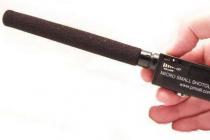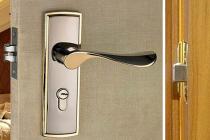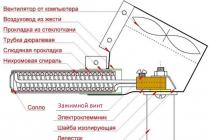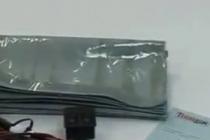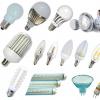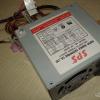With the onset of cold weather, motorists think about heating the car seat, the first thing that comes to mind is to buy covers or heated capes. But unfortunately they do not always fit the seat and create discomfort for the driver when driving. In this article, we will look at how to make do-it-yourself seat heating, although this is more difficult to implement than to buy capes, but it's worth it.
In order to mount the heating in the seats, you will need:
- A set of parts for heated seats (for example, a set "Emelya"), its cost is about two and a half thousand rubles;
- Wires: about 6 meters of 2.5 mm stranded wire for use as a power cable, for a control wire with a cross section of 1.5 mm, (two 2-meter pieces);
- Fuse connector and fuse itself;
- Wire with a cross section of 1.5 mm (control), 2 meters long;
- 6 mm terminals with washer lugs and female-male clamping strips;
- M6 self-locking nuts;
- You can take corrugations for laying wires with a diameter of 4.5-8 mm;
- Insulating tape;
- Plastic clamps;
- Red LEDs;
- Heat shrink tubing;
And also various tools: screwdrivers, side cutters, screwdriver, scissors and knife, file, keys.
DIY seat heating installation
As an example, I took the installation of seat heating with my own hands on a BMW, in the seat of which an igniter is installed by the factory, airbags under the seat, a battery in the trunk (and not in under the hood space).

These factors complicate the installation of heating somewhat.
If we talk about the "Emelya" kit for installing heating in the seats on your own, then on its box there is a connection diagram with which there should be no questions.

The first step is to remove the seats from the mount (since the heating is mounted inside the seats). On different cars, the design may differ, you need to be especially careful if you do seat heating with your own hands in a car with airbags installed. There is a risk of damaging the igniter when removing the seats. It is better to look at the diagrams of how to remove and install the seats specifically in your car in those. documentation.



Place the heating mats on the seat, try on and use a marker to mark the slots that will attach the mat to the seat frame and trim. Naturally (and the instructions also warn about this), the heating threads cannot be cut.
Having made the slots, we attach the heating mats to the seat trim with plastic clamps.
Pull the power cable of the heating mat through the foam rubber of the seat. It is recommended to lead this wire from the back, closer to the armrest. It is quite reasonable to place this wire in a corrugated PVC tube (by the way, this is how the “native” heaters from the factory are made).

Quite often, standard wires are short and do not reach from the mats to the place where the regulators will be mounted, so they are built up with the same wire, soldering the joint and placing the wire in the corrugation.
We take power from the power cable, through a fuse and connect it to the battery, to the positive terminal. If the battery is in front, then this is easier to do, and if the battery is in the trunk, you will also have to dismantle the rear seats in order to stretch the cable in the cabin, under the carpet. Remove the positive terminal or disconnect the fuse before proceeding.
The wires leading from the regulators to the heating elements must be hidden in the corrugation and carefully laid under the carpets. It is important to remember that the wire cannot be pulled, leave slack, a margin in case the seat moves back.
Most likely, install the controls where it is convenient for you, since it does not fit into the regular place for the controls on the console. And if you buy "native" heating control buttons, they can be more expensive than the entire set that you install.

It remains to connect the relay included in the seat heating kit with a positive wire to the ignition switch. Just carefully follow the instructions of the kit and the very diagram of the connection to the ignition switch. Although the contact numbers for cars may differ, you need to solder the wire to the contact on which +12 volts appears at position No. 2 of the ignition switch.
Now we cut off all the wires connected to the relay (control and power to the heating mats), leaving a small margin, clamp (or solder) into female connectors, put on a heat shrink tube and connect to the relay itself. The ground wire is connected to the body in the closest place.

Thus, with a little work, you equip seat heating in your car with your own hands and stop depending on the cold outside of your vehicle. This is not a difficult job for someone who knows how to handle the most basic tools.
How to make heated seats with your own hands - video
Winters in our latitudes are often too cold and frosty - such that it is not so easy to warm up in a car, even with the stove turned on. Of course, in recent years, almost all cars have been equipped with such a function as heated front seats, but not all car models are equipped with the option of heated rear seats. Often, such a function is available exclusively for expensive foreign cars, while cars in the budget segment are usually not equipped with anything like that. So what now - the passengers sitting in the back freeze, or can this problem still be somehow solved?
It turns out that there are no unsolvable problems, and heating the rear seats of a car can be easily arranged, and you can do it yourself. Below is a short small instruction that can help you install rear seat heating in your car for those motorists whose arms grow from the right place. Of course, there are some difficulties in the installation of built-in heating systems, but the result will be worth it.
Interesting! There is an opinion that only the most expensive car models are equipped with a built-in rear seat heating function, however, in the model range, many manufacturers also have quite affordable cars that have this option - their average cost is about 25-30 thousand conventional units.

In addition, the installation of seat heating of just such a plan gives a lot advantages: firstly, with the correct work, neither the interior of the cabin nor the appearance of the rear seats themselves will change, secondly, all the wiring will be hidden, and, thirdly, you can connect such heaters directly to the car's electrical system, thereby leaving free access to the cigarette lighter.
1. Necessary components
Having made the decision to install heated rear seats in the car with your own hands, for a start it is worthwhile to attend to the search and purchase of all the components necessary for this. Nowadays, there are many corresponding kits for the installation of seat heating on sale, among which you can choose a product that suits your taste and is suitable for cost.
The most popular with us are built-in heating elements made in Germany (Weako), Russia (Emelya and VO), China (Autoline International) and Taiwan (Megalight). Naturally, all these kits and kits differ in both their cost and quality, as well as versatility and level of reliability.
Note! Chinese kits for installing heated rear seats are the most attractive in price, but at the same time, it is they who have more frequent breakdowns, such as breaks or short circuits, uneven heating of the seat surface, breakage of power buttons, etc.
 Most of these kits have the ability to use several different modes of their operation: heating the seats, heating only the backs and simultaneously heating both the backs and the seats. Also, such devices can have different temperature conditions.
Most of these kits have the ability to use several different modes of their operation: heating the seats, heating only the backs and simultaneously heating both the backs and the seats. Also, such devices can have different temperature conditions.
2. Installation and connection
After everything you need is selected and purchased, you can proceed to the very process of self-installation of heating the rear seats of a car, while you should be prepared for the fact that the installation of the selected kit will take at least several hours. Undoubtedly, everyone can choose for themselves the sequence of performing this work, but this article shows just such a procedure.
Interesting fact! Some models of inexpensive cars without a heated seat function, however, are equipped with the necessary wiring and accessories to connect it, which makes the subsequent process of self-installation of the seat heating easier.
 It is quite logical and even necessary to call the recommendation first of all to prepare the built-in heating kit itself and all the tools necessary for installation (screwdrivers, knife and scissors, adhesive tape, pliers, glue, and so on).
It is quite logical and even necessary to call the recommendation first of all to prepare the built-in heating kit itself and all the tools necessary for installation (screwdrivers, knife and scissors, adhesive tape, pliers, glue, and so on).
2.1. Installation and output of buttons in the armrest
First, you need to determine the place where the buttons will be located, which will turn on and regulate the heating of the rear seats of the car, for example, it will be very convenient to place them in the armrest. If there is one in the car, then it can be purchased separately, while choosing an armrest with existing openings for buttons. Otherwise, you will have to cut out the holes for the heating buttons yourself.
Important! In some cases, it is better to place the buttons for turning on and off the heating of the rear seats on the dashboard in the direct line of sight of the driver, then it is he who can control this function. This option will be especially useful if the heating is turned off as unnecessary.
 The next step will be the wiring, and this task must be completed in such a way that the wires connected to the heating elements do not interfere with the passengers and do not spoil the aesthetic appearance of the car interior. Therefore, it is advisable to lay the occasion in such a way that it would then be possible to hide them in the existing structural elements of the car.
The next step will be the wiring, and this task must be completed in such a way that the wires connected to the heating elements do not interfere with the passengers and do not spoil the aesthetic appearance of the car interior. Therefore, it is advisable to lay the occasion in such a way that it would then be possible to hide them in the existing structural elements of the car.
Important! It is not necessary to lay the wiring in places where it can be damaged, in particular, it is highly discouraged for the wires to be under the feet of passengers.
2.3. Connecting to the network
Next is, in fact, the connection of the laid wiring to the network. Of course, the easiest way will be to connect the seat heating kit to the cigarette lighter, however, this option will make it inaccessible for use. An alternative, and a very good one, can be to connect the heaters directly to the car battery.
 It should be taken into account that in the cold season, when all the heating devices in the car are turned on, the load on the battery will be quite high, so some of the possibilities will most likely have to be sacrificed (for example, do without listening to music).
It should be taken into account that in the cold season, when all the heating devices in the car are turned on, the load on the battery will be quite high, so some of the possibilities will most likely have to be sacrificed (for example, do without listening to music).
2.4. Removing the rear seats
Well, in the end, you can proceed to one of the most important stages in the process of installing heated rear seats with your own hands - installing the heaters themselves. But for the beginning, the seats will need to be dismantled, and then carefully remove the upholstery from them.
Interesting to know!Some seat heating devices have an interesting additional feature - they do not turn on when no one is sitting on the heated seat.
 Often it is this very task that takes a lot of time and effort, since removing the rear seats for a beginner is not easy at all. It is also necessary to be very careful when removing the upholstery from the seats of a car - this must be done in such a way as not to damage the material in any way, but after all the work is completed, put everything back.
Often it is this very task that takes a lot of time and effort, since removing the rear seats for a beginner is not easy at all. It is also necessary to be very careful when removing the upholstery from the seats of a car - this must be done in such a way as not to damage the material in any way, but after all the work is completed, put everything back.
2.5. Installation of heating elements
Well, now comes the moment of installing the heating elements themselves, which are attached under the seat upholstery and on the backrests (also under the upholstery). Standard rear seat heating kits include double-sided tape or glue to attach the heating surfaces to the car seats, or the heating elements themselves have self-adhesive surfaces. But sometimes motorists fix them additionally in some other way.
It's important to know! When installing heated rear seats in frosty weather, it is advisable to carry out such work in a warm garage, since due to low temperatures, glue or self-adhesive can significantly lose their adhesive properties.
 After the heating elements are attached to the seats, and the wires are brought out, it will be necessary to put the upholstery back on the seats and reinstall them in the car. After that, you just need to connect the heaters and check their operation.
After the heating elements are attached to the seats, and the wires are brought out, it will be necessary to put the upholstery back on the seats and reinstall them in the car. After that, you just need to connect the heaters and check their operation.
Important! Not all seat heating installation kits are short-circuit protected - in this case, it is recommended to purchase and connect fuses to the heating system yourself.
3. Warm result
So, at the end of all this dreary and painstaking work, the motorist will be able to use an additional option in his vehicle, however, this function will please, first of all, the rear seat passengers.
Manufacturers now offer drivers a variety of vehicle configuration options. You can choose in advance what useful options your car will have. The most popular among domestic motorists are options such as:
- air conditioner,
- power windows.
Also, quite often, cars are equipped with acoustic systems. But here everything is not as simple as it might seem at first glance. The fact is that most music lovers will prefer to choose a system to their liking, rather than a budget factory option. Although it should be admitted that more than good speakers are installed on premium cars.
But today we are not talking about them, but about such an option as heated seats. Every car owner, at least once, who has been sitting in a heated car, will want such an accessory in his car.
Attention! Typically, a good heating system takes no more than thirty seconds to make you feel like somewhere in the tropics.
Heated seats is of particular relevance for people suffering from various diseases of the back and cervical spine. Sometimes it is enough to sit in the heated seat for 20 minutes, and all the pains go away.
Unfortunately, until now, not all cars have the option of installing heated seats upon purchase. Usually, this limitation applies to cars of the middle and budget class. Moreover, even if it is in the price list, this option is very expensive.
It is not surprising that every year more and more drivers decide to install heated seats with their own hands. This process is very costly, but not particularly difficult. Every motorist can do it.
Heating types
It should be noted right away that in order to have warm seats in winter, it is not necessary to open the casing and independently connect the electric heating circuit. There are alternatives to avoid this. Of course, despite the advantages, this option did not do without disadvantages.
Special capes

This type of seat heating does not require any complicated installation. It is enough to throw a cover over the chair, and you will provide yourself with warmth for the whole winter. At least this is how this concept looks at first glance.
Besides capes on the market, you can also find special heated car seat covers. They are much more comfortable as they have a better hold and will not slip in sharp turns.
Attention! Coats and covers have special heating elements that provide the driver with warmth.
In addition to ease of installation, the advantages of just such a seat heating, which everyone can install with their own hands, can be attributed to the low cost. Unfortunately, it was not possible to do without drawbacks. The most important thing is the extremely low quality of the entire structure.
If you search the Internet, you can find more than one case where the cape caught fire right under the driver. Moreover, such devices are characterized by uneven heating. In some areas, the temperature rises to 40 degrees.
Another significant drawback of a cape or cover is the way of connection. To activate such heated seats, you need to use the cigarette lighter socket. Taking into account the fact that the average driver has a navigator, smartphone, video recorder and so on in his car, this port is becoming scarce.
Attention! Even a splitter is not able to help in such a situation. The fact is that this type of seat heating consumes too much electricity and the fuse simply cannot withstand.
Also, do not forget about the wires, which will definitely appear in the salon as a result of the purchase of a cape or cover. Cables can create an emergency, because at critical moments it is very easy to get tangled in them.
Built-in heating

Of course, it will take much more time to install the built-in seat heating. However, if you follow the instructions, the time required to carry out this operation can be significantly reduced.
The main advantages of built-in seat heating include:
- The possibility of simultaneous heating of both the front and rear seats.
- All the wires are hidden under the interior trim, so you won't get tangled up in them.
- The system is connected to the car's wiring harness. This will free the cigarette lighter socket. In addition, the on-board network may well cope with such a load.
- Since the heating is introduced into the seats, the original interior is preserved.
As you can see, despite some difficulty in installation, built-in seat heating has a number of significant advantages that cannot be ignored.
Choosing a kit

Before proceeding with the installation of seat heating, you need to decide on the kit that you need. The most popular now are the goods of German, Russian and Chinese brands.
Naturally, the best in quality are the seat heating kits from leading German companies. But their cost is also appropriate. Of course, such systems are installed in both the front and rear seats.
High-quality kits should have at least several degrees of protection. Also, high-quality seat heating systems usually have more than one mode of operation.
It should be noted that among Russian companies there are brands that provide high-quality and relatively inexpensive products. Suffice it to recall such giants as Avtoterm and Teplodom. Seat heating systems from these companies have protection, as well as high-quality heating elements. For greater reliability, they use an armored cable. They also have an overheating protection function that turns off the device when a critical temperature is reached.
Seat heaters from China traditionally have the lowest price. Unfortunately, in most cases, products from this country cannot boast of either a reliable design or a good protection system. There are, of course, exceptions, but their price is not much lower than their German counterparts.
When choosing a seat heating system, it is better to immediately buy a high-quality kit, since devices with a low price may have such defects as:
- failure of the control button,
- burnout of the wiring,
- short circuits,
- uneven heating.
Taking into account the time that you have to spend on installation, it is better to immediately buy a high-quality kit so as not to waste your energy on repairs.
DIY heating

With some knowledge of electrical engineering, seat heating can be done independently. Nevertheless, the reliability and safety of such a design will not be very high.
To make heated seats with your own hands, take a nichrome wire with diameters of half a centimeter. Form four spirals. To do this, use a wooden block with two hammered nails at a distance of 4 cm.
Important! Do the curl with a figure eight.
Take thick denim and connect all the spirals on it in a parallel way. The power supply must be at least 12V. The final indicator of the calculated power will be 40 watts. Also, don't forget to install the relay in your DIY seat heater.
Installation
Training
Any business that is worthwhile starts with preparation. After you have chosen and bought yourself a kit, you need to attend to the selection of tools and materials appropriate for your task. To install heated car seats with your own hands, you will need:
- plastic clamps,
- multimeter,
- set of screwdrivers,
- wrenches of different sizes,
- scissors,
- electrical tape and double-sided tape,
- heat shrink tubing,
- marker,
- pliers,
- glue,
- soldering iron.
This is a standard set. Simply put, you cannot do without these tools when editing. But you should take into account that there are systems of varying complexity. Moreover, much depends on the basic delivery set. Very often, cheap kits do not have the necessary wires or fuse to install. In this case, you will have to buy them yourself.
Attention! It is best to use a stranded wire with a cross section of 2.5 mm2 for wiring.
Mounting

Before proceeding directly to the installation, calculate in advance where you will install the control buttons. Also select the appropriate mount type. After choosing a suitable location for the manipulators, simply follow these instructions:
- Dismantle the chairs and disassemble them. You need to remove the headrest as well as unfasten all the plastic parts.
- Remove the seat trim. Usually it is fixed at the very bottom with metal rings. You can do without complete removal, the main thing is that you can safely install the heating elements.
- Remove the trim from the back of the seats. To do this, you will need to unfasten the plastic bushings of the head restraints.
- The heating element must be placed on the foam rubber and with the help of a marker outline the contours. Then strips of double-sided tape are glued to them and glue is applied.
- The elements are fixed on the back and seat.
- Lead out the power wires.
- Reinstall the trim.
- Return the seat inserts and headrests.
At the very end, the seats are reinstalled and the wiring is laid.
Connection
To connect heated seats, you need to use the circuit that will come with the kit. You can find the power circuits with a multimeter. In this case, the positive wire of the thermal relay is connected to the ignition switch, the negative cable goes to ground. The button illumination is connected to the cigarette lighter contacts.
Attention! All connections are soldered and insulated at the end.
Outcomes
As you can see, every car owner can install heated seats. The main thing is to properly prepare for installation, collect the entire set of materials and tools, and also purchase a high-quality heating system or make it yourself.
Undoubtedly, we all love comfort and coziness, the presence of which can hardly be said, for example, in a car with a leather interior frozen in winter. And the question here is not in the upholstery of the passenger compartment, but in the inevitable discomfort in frosty weather. Do-it-yourself seat heating is the best way to avoid this discomfort.
Installing heated car seats is quite a responsible matter, especially for those who are electricians on "you", therefore, in order to avoid force majeure situations, before getting down to business, be sure to consult with an electrician or an experienced installer of homemade seat heating systems.
Buy or make?
In the modern market for auto parts and accessories, you can easily find removable heating covers (capes) and even whole heated seats. Their low cost and ease of connection are undoubted advantages, therefore, if finances allow, as they say, do not show off and buy a ready-made version.
Of course, if there is no money for it, you will have to do everything yourself.
What do you need.
- Nichrome wire 0.5 mm in diameter and 10 meters long.
- Relay.
- Button.
- Wires and connectors for mounting the heater in the car.
DIY seat heating: instructions.
- To begin with, you need to make 4 spirals from the wire: it is most convenient to do this using a wooden bar and two nails driven into it (without hats, they should be bite off) at a distance of 4 cm from each other - just wind the wire around the nails with a figure eight, forming spirals.

- Find a piece of fabric, preferably denim, that matches the size you need to heat your car's seat (approximately 30 cm by 30 cm). Using a sewing machine, stitch 4 rows of spirals parallel to each other to the selected fabric patch. Connect the spirals with wires. The power of such a heater reaches 40W. Connect the resulting structure through a relay to a power source (cigarette lighter).

Unfortunately, this type of seat heating, regardless of whether it is homemade or bought in a special store, has a number of fairly significant drawbacks.
- There is a risk of getting burned, because no one gives a 100% guarantee that any of the wires will not fail, igniting right under its warmed owner.
- Such covers are often characterized by uneven or abrupt heating.
- This heating element is connected to a power source through the cigarette lighter socket. However, at present, many drivers use this connector to connect a navigator, DVR, etc., and the splitter in this situation cannot be a way out of the situation, because seat heating requires considerable current consumption, which is disproportionate to several connections to the network at once, therefore the driver or his passengers will have to choose what is more important at the moment: warm up or go according to the instructions of the navigator, for example.
- Another point: the considered heating option is very inconvenient to use due to the presence of wires in its design that interfere with the driver, and passengers from the rear seats do not have the opportunity to warm up in this way at all, unless, of course, you lengthen the wires leading to the relay.
Based on the described disadvantages of the above-described heating method, we will consider a built-in version of heating elements. For many car owners, such a solution to the issue can justifiably scare, because, in addition to collecting the structure itself, the driver faces a difficult task in its installation. However, this option will solve many of your problems in one fell swoop (the wires are hidden, the interior has not been changed, the cigarette lighter socket will remain free, since all elements are connected directly to the car's wiring), providing an opportunity to warm up in winter frosts not only to the driver and the passenger sitting in the front seat, but also to "guests" from the back sofa.
How to make a built-in seat heating with your own hands?
First you need to purchase the so-called backbone of the whole structure - heating elements. Why buy and not make yourself? The question is your safety. Since the elements are built-in, and any inaccuracy in independent work cannot be identified and eliminated in a very short safe period of time, it is better and more reliable to use ready-made elements. Their choice is large enough. We will focus on the domestic manufacturer Emelya (Russia), whose product quality is not inferior to reliable Germans, and the price is much more pleasant.
This kit includes an electronic temperature controller and overheating protection.
The heating element in "Emela" is represented by an armored cable or carbon fiber.

Additionally you will need:
- set of screwdrivers,
- wrenches for disassembling the chair,
- plastic clamps,
- scissors,
- knife with replaceable blades,
- insulating tape,
- multimeter,
- heat shrink tubing,
- pliers, marker,
- soldering iron,
- double-sided tape (you can glue 88),
- stranded wire 2.5 mm sq. section - for wiring.
To begin with, decide on all the control buttons and their fastening, so that if necessary (suddenly they will not be in a regular place), you can purchase suitable for this car.
Now you can get down to business.
- Disassemble the seats: start with the headrest, then remove the plastic elements, then the upholstery of the seats, making room for the heating mats. To remove the "back" trim, remove the plastic headrest bushings.

- Place the cloth with heating elements on the foam rubber of the seats, marking its dimensional contours with a marker. Follow the marked lines, stick the strips of double-sided tape or use 88 glue. If there is a thermal sensor, also install it on the foam rubber.
- Glue (attach) heating mats in the designated area on the seats. Here you should pay special attention to the location of the wires. Do not forget that they must be on the right in the driver's seat and on the left in the passenger seat. Lead out the power wires.

- Install the "native" casing on the supplemented foam base, using plastic clips in the necessary places. Also, return all plastic elements, head restraints to their original position and install the seats in their original places. In this case, the wiring should be laid in the places where the power connections and controls are located.
A very important point: the wires leading to the heating mats from the regulators must not be put in tightness, leave such a margin that will allow you to calmly move the chair back if necessary.
- It's time to connect the heating elements. In this matter, you should be helped by the instructions provided with the installation kit. If she is not an assistant for you in connecting the unit to the on-board network, it would be better and more correct to seek help from professionals. If you are confident in the correctness of your actions and are ready to try to deal with this stage on your own, we recommend that you pay attention to certain recommendations:

- It is necessary to detect the power supply (12V), ignition and backlight circuits with a multimeter.
- Connect the positive wire of the thermal relay to the ignition lock connector, which is powered only after turning the key.
- Connect the power cable to the positive terminal of the battery through a fuse.
- Lead the negative wire to ground, and the button illumination wires to the cigarette lighter contacts.
- All connections, of course, must be soldered and insulated. Then you can check the system.
An important point: a properly assembled system will work only when the ignition is on. Otherwise, you run the risk of not starting the car someday.
Only one question remained unclear: what about the rear sofa of the passenger compartment and its heating? For those who constantly move with their family in a car, this is a very important point. But there is nothing complicated here either: the installation and connection of the rear seat heating system is similar to that described above. The only difference is that you need two sets of heating elements for one sofa.
Video.
autoepoch.ru
DIY seat heating installation
The cold season in Russia lasts about six months. Although there are regions in the country with a longer winter period and a significantly harsher climate than in the middle lane. In this case, the installation of heated seats will not only not be an unnecessary refinement, but in fact is the first necessity.
Middle-class cars of recent years are equipped with such an option already from the factory, but earlier models or the budget level of transport deprive the driver and passengers of such an element of comfort. To solve such a problem, you can contact the station and order a tuning of the salon, which will cost the car owner a decent amount. However, there is an option when you can reduce costs and get the desired result. You need to do everything yourself.
Types of "non-factory" car seat heaters
Before you do seat heating with your own hands, you need to find out what are the ways of non-standard seat heaters in a car. Since not all variants of the proposed designs are universal, it is possible to decide in advance on the choice of a suitable local heater.

Heated seats
Under-cladding heaters
On sale there are standard sets, for example, "Emelya", which contains a set for installing a heater under the upholstery of the chair. You will need to add a few fasteners to such a kit and you can mount it on the two front seats.
The cost of such a set is on average about four thousand rubles.
If you order the work of installing it at the station, then about the same will need to be paid for the installation. Although the result will be satisfactory.
- ready to go after installation;
- inexpensive cost for self-assembly;
- aesthetic appearance;
- the same heater for two chairs at once;
- the ability to adjust modes.
- it is necessary to open the upholstery of the seats;
- there are cheaper options;
- no rear row heating included;
- not all beginners can perform a high-quality installation.

Heating "Emelya"
Heating capes
Not all local heaters need to be installed. Indeed, in the southern regions of the country, you can get by with temporary devices. In this case, a temporary heated car seat cover is fine. Its installation does not require major alterations in the cabin. Most often it is connected through the cigarette lighter socket.
The cost of the product varies from manufacturer. The minimum prices are from 800 to 2000 rubles per copy for one chair.
Most often, there are countries that produce this product:
See also: How to make a backlight in a car with your own hands
Product weight from 0.6 to 0.9 kg. Heating can be either only for the lower part of the chair, or complex, including a warm "back". With this design, the seat heating button is not located on the cable plugged into the power outlet. No installation is required.

Seat Covers
- minimum cost;
- can only be purchased for one driver's seat;
- quick assembly and disassembly;
- a large selection of manufacturers;
- to turn on, you do not need to output separate wires, the cigarette lighter socket is enough;
- several preset modes;
- a large number of colors and styles.
- not quite aesthetic appearance;
- for the second seat you need an additional socket in the cigarette lighter or "tee";
- often come across substandard fakes that quickly fail.
Self-made heaters
Such a device can be made at home. Do-it-yourself seat heating will cost less than one bought in a store. Almost any student who has had physics and labor lessons will be able to assemble it.

Nargev adjusting wheels
- low cost;
- there are components for it in almost any home;
- you can set any power, shape and make connection methods;
- made independently without outside help;
- can be plugged in directly, leaving the cigarette lighter free.
- not always an aesthetic appearance is obtained;
- it is required to correctly calculate the power so as not to overload the battery or not burn the wiring in the car;
- when installing the button, a cut-out into the panel or other parts of the plastic interior is required.
How to choose the right design
The main selection of local heaters for a car consists of German, Chinese, Polish or Russian products. The practice of using such products speaks in favor of products from Germany and from domestic companies. Although the prices for European goods are higher, their reliability is also guaranteed.
These heaters are equipped with various degrees of overheating protection and high-quality regulation with a thermal relay. Our companies, such as Avtoterm, which offer cheaper products, are not much inferior in quality. However, armored cables and fuses also take care of the safety inside the passenger compartment.
Buying Asian products increases the risk of getting an unreliable product.
You can often hear about breakdowns of buttons, failure of the mode regulator, or melting of too thin wires. Products from unknown companies can cause a fire in the car, therefore, when buying, you must ask for a warranty card and check the manufacturer's certificate.
See also: How to sheathe a steering wheel with leather with your own hands
Installation of the "Emelya" kit
For the correct connection of this heater, there is an assembly diagram on the packaging box that determines the procedure. There are also marked methods for connecting electrics to the car control unit. Before starting the installation, it is necessary to dismantle the seats from the passenger compartment.
Step 1. Dismantle the chairs Step 2. Remove the upholstery Step 3. Fix the heating plates Step 4. Assemble the structure Step 5. Disconnect the contacts for the button and adjustment Step 5. Connect to the wiring according to the diagram
You need to know that some cars are equipped with a side airbag cartridge. When removing the seats, it must be handled carefully so that it does not trigger.
The heating sheets are mounted under the trim, so it can be removed from the seat and back of the chair. Next, you need to fix the heaters in their places, while removing the contacts for switching on. Next, a heating start button is installed on the dashboard and connected to the seat and the removed wiring harness from the fuses.
It is necessary to connect with the wire from the battery, which shows a voltage of 12V only in the second position of the ignition key. Thus, additional protection against overheating is established.
The cable connecting the heating element with the button can be packed into a corrugated tube, and then hidden under the interior carpet.
Self-production of a seat heater in a car
For the manufacture of a heating device, you will need a nichrome wire of about 10 m, with a diameter of 0.5 mm. We form four spirals, on a device made of a wooden block and two hammered nails, at a distance of 40 mm, curling the wire with a figure eight, and not in a circle. For clarity, see the photo report below.
Step 1. Making a device for making a heating element Step 2. We attach the heater to the base and connect the wires to it Step 3. Remove the upholstery and install the heater Step 4. Connect the wiring to the heater, regulator and button Step 5. Make an aesthetic look in the cabin
Next, you will need a dense natural fabric, preferably from old jeans or military camouflage uniforms, without synthetics and flammable materials. Connect the resulting spirals in a parallel way. For power supply, you will need 12 V. The design power of the structure comes out about 40 watts. The relay is additionally mounted.
Conclusion
You can equip the car with seat heaters for every taste and budget. For those who do not want to remove the upholstery, armchair covers are suitable. For residents of cold regions, it is wiser to equip the vehicle with stationary heating of the front and rear seats.
ktonaavto.ru
DIY seat heating: considering a good example

Every time the winter cold again reminds of additional insulation. For even the ancient people bequeathed to keep their feet warm. Only heated seats are not included in the basic configuration of many cars. We'll have to get confused. There are two options here: buy this "extra comfort" or do the heating of the car seats with your own hands. A survey of close friends - notorious motorists - shows: the second is more reliable. Purchased heaters are both expensive and break down frequently.

The lack of basic seat heating can be easily compensated for on your own
Do It Once: think it over and get morally tuned!
Before proceeding with the list of materials, we decide on what we already have. We have three options here:
- remake an already finished but broken heating;
- make from scratch;
- a costly and troublesome way - to make a heating built into the seat.
With a ready-made rug, it turns out much easier. No need to think about dense thermal insulation fabrics, look for them and sew them on a typewriter. Everything has already been thought out. It remains to replace the heating element.
 Another way to warm up in winter is to use a stove in the car from the cigarette lighter. How to choose it - see us.
Another way to warm up in winter is to use a stove in the car from the cigarette lighter. How to choose it - see us.
What do the markings of winter tires mean can be found in this material.
The heating element built into the seat is always with you in the car. You can display a button on the panel and pretend that it was. Difficulties sometimes arise with the analysis of the seat itself. And if his bottom is pliable, then the back is much more difficult to disassemble. But still understands!
We will take the second option as a basis. It is on its basis that work is built in all cases. Knowing the theory, you can cope with more complicated options.
Do Two: Let's Go Shopping!
List of materials:
- Nichrome wire diameter 0.5 mm - 10 meters.
- The bar is thicker.
- 2 nails.
- Old jeans.
- Scissors.
- Pencil.
- Sewing machine.
- Button.
- The wire.
- Car cigarette lighter plug.
- Connectors.
- Heat reflector.

Nichrome wire can be bought at almost any hardware store
Do Three: let's get started!
- Cut out 2 rectangles from old unnecessary jeans. They do not necessarily cover the seating surface.
- We draw on one of them how the heating wire will pass: in zigzags or waves. Better to choose zigzags. It is more convenient in drawing and bending. Although, to whom that ...
And now our fabric has become much more interesting than before!
- Now a nichrome wire will lie right along the drawing.
- First, you need to fold it in a zigzag. The fastest way to do this is with a bar and nails.
- Drive two nails into a wooden block at a distance of 40 mm.
- Now we consistently and monotonously wind the wire between the nails with an eight. There are just enough turns to cover the whole drawing.
- Transfer the wire zigzags to the fabric.
- We sew each zigzag on a typewriter 2 times. Above and below. The better we fix this structure, the safer it will be to use it. Attention: if the wires touch somewhere, there will be a short circuit!
- We close our blank on top with the second piece of jeans. We sew, leaving a hole for the wires.
- A thermal reflector can be sewn on from the bottom. This will protect the seat from excessive heat build-up.
- From above, the most used place, it is better to lay it with foam rubber and another layer of thick fabric. This is done in order not to accidentally break the heating element.
- We finish around the perimeter with a few more lines on a sewing machine.
- With the help of the connector we bring the wire out through the "window" in the fabric.
We are testing. We need a 12 Volt DC power supply like the one in the car. You can use a computer power supply.
Do Four: home stretch
Where to power the invention in the car? A good old cigarette lighter will help out. We connect in series: invention - button - plug. You can do without a button, but then the seat heating works while the plug is in the cigarette lighter.
Fuh! .. Exhale freely. Working. I'm done! The chair heats up in 2-3 minutes. Not a bad result to start with!
Reviews of those who have already made themselves:
Electrician owner: At first it was not possible to buy a ready-made "hot pot". I decided to cope on my own. He made Eletrika himself. Wife sewed, but under strict guidance. Tested according to the instructions on a computer. Corks are not knocked out. This means that nothing was closed anywhere. Everything worked out right away. We go now and rejoice. What great fellows we are!
Spouses-entrepreneurs: In a car store bought a ready-made heated seat. He worked with us for two weeks. And suddenly he stopped warming. There was nothing to lose. They began to disassemble. As a result, it turned out that the heating element had broken. On the basis of the finished one, we made our own adjustments, put a homemade heater. It works now. We have been testing for several months!
Here is what the anonymous appraiser at the Bureau of Expertise says: Initially, he did it himself. Because I only trust what I am sure of. Plus, it's easy and fun. The only thing you need to watch carefully. After all, an electrician! Turn it off in time so that there is no fire. And so - it works, heats up.
See another guide on how to DIY heated seats (video)
Do Five: The Berry Machine Again!
Based on this simple design, you can come up with something more chic. Build, embed, build ... Equip the chairs with heaters or make such a device that any motorist will envy. There is no limit to perfection, if only the hands grow from the right place. Further, it is only up to your imagination, ingenuity and hands that cannot be lowered. Warm winter, to you and your "Swallow"!
procrossover.ru
How to organize seat heating with your own hands and not make mistakes?
Not every modern car is equipped with heated seats; such equipment is often available only in top-end configurations. And although the controversy over the usefulness of the option does not subside, most drivers still prefer this convenient feature and install the heating kit on their own.
What kind of seat heating can be installed with your own hands: types of heating elements
The market of auto accessories at the present time is able to satisfy almost any requirements of motorists. This fully applies to products intended for heating chairs, which are available in two types:
- Covers and capes.
- Embedded.
Covers and capes
 Before you make do-it-yourself seat heating, you need to know that the first option has a low price and ease of installation. It is enough to put the cover on the chair, connect it, and the set is ready to go. Usually the heater is plugged into the cigarette lighter socket, but terminal connections are also possible. However, this type of heating organization also has a number of significant disadvantages:
Before you make do-it-yourself seat heating, you need to know that the first option has a low price and ease of installation. It is enough to put the cover on the chair, connect it, and the set is ready to go. Usually the heater is plugged into the cigarette lighter socket, but terminal connections are also possible. However, this type of heating organization also has a number of significant disadvantages:
- low electrical and fire safety;
- uneven heating of the area;
- discomfort from wires;
- violation of the interior layout;
- inability to use capes on the rear seats.
There is one more problem. Many drivers include other gadgets in the cigarette lighter socket, for example, a GPS navigator, a video recorder, and a phone charger. The use of a splitter is not a way out of this situation - the heating element consumes a significant amount of energy and the fuses may not withstand. In addition, there is a threat to the fire safety of the car.
Embedded models
For car owners who decide to organize seat heating with their own hands, this option is embarrassed by the difficulties of installation. Here they can be reassured - detailed recommendations of experienced motorists will help everyone who knows how to hold a screwdriver in their hands to complete the installation. It is enough to carefully study the proposed technology and have a nominal set of tools. In addition, the advantages of embedded systems in comparison with capes are obvious:
- the ability to equip heated not only the front seats, but also the rear ones;
- hidden connection, the wiring is laid under the interior trim;
- direct connection to the on-board network, the cigarette lighter socket is available for other consumers;
- the profile of the chair and the interior component of the cabin do not change.

Since everything is clear with heating covers and capes and their installation does not raise any questions at all, then below we will talk about embedded systems.
Briefly about the choice of heating elements
The range of elements that are mounted directly into the body of the chair is quite extensive. This allows you to make the best choice based on the design features of the cabin and its components, as well as the financial capabilities of the owner. The most popular products are from Russia, China, Taiwan and Germany. Here are some examples of models:
- mounting kits from the Weaco company (Germany);
- built-in blocks "Emelya" from the company "Teplodom" (Russia);
- kits "VO" from the group "Avtoterm" (Russia);
- sets from Megalight (Taiwan);
- kits from Autoline International (China).

Naturally, all models differ both in terms of workmanship and price. Owners who already know how to correctly do seat heating with their own hands assure that the high cost of German equipment is compensated for by its reliability and versatility. Its elements are equipped with overheating protection and have several modes of operation.
Russian samples of heating technology are practically not inferior to German ones; a reinforced cable or carbon fiber is used as a heating element. The kit includes an electronic temperature controller and overheating protection.
Products from China are attractive for the price, but more often than not all the advantages end there. As our motorists note, the main problems with such kits are:
- breakage of the power button;
- short circuit or broken wiring;
- uneven heating of the plane of the chair.
Practice: how to make stationary seat heating with your own hands?
So, the choice is made and the heating kit is purchased. It remains to prepare the necessary materials and tools. These include:
- a set of screwdrivers and wrenches for disassembling the chair;
- electrical tape and heat shrink tubes;
- plastic clamps;
- multimeter;
- scissors and a knife with replaceable blades;
- pliers;
- soldering iron;
- marker;
- glue 88 or double-sided tape (available in the installation kit).
We can add to everything that the set of materials may differ depending on the configuration of the product. For example, if there are no wires or a fuse connector, then they need to be purchased. A stranded wire with a cross section of 2.5 mm² is suitable for wiring.

Before you organize the heating of the front seats with your own hands, special attention should be paid to the placement of the control buttons that come with the kit. It is important to study the way they are fastened and the size, since there is a possibility that the buttons will not fit into their regular place. Then you will have to choose another place or purchase control elements for a specific car. Further, all work is performed according to the following scheme:
- dismantle the seats and carefully remove them from the car;
- disassemble the seats, remove the headrest and all plastic elements; work better at the table;
- remove the upholstery of the seats, which in most cases is fixed from below with metal rings or plates; it is completely possible not to remove it - it is enough to free up space for the heating mats;
- remove the trim from the back, for this you need to remove the plastic bushings for the head restraints;
- lay the heating cloth on the foam base and mark its contours with a marker;
- if there is a thermal sensor, fix it on the foam rubber;
- glue strips of double-sided tape or glue 88 along the marked lines;
- fix the heating mats on the back and on the seat; in this case, it is imperative to pay attention to the position of the wires - for the driver's seat they should be on the right, and for the passenger's - on the left;
- remove the power wires;
- install the casing on the foam base; in places where it is necessary, use plastic clamps;
- refit all plastic elements and head restraints;
- install the seats in their regular places and lay the wiring to the locations of the controls and power connections.

Important! Motorists who already know how to make stationary seat heating with their own hands recommend paying attention to the laying of the wires that go from the regulators to the heating mats. In no case should they be laid tightly, it is necessary to leave a margin in case the chairs need to be moved.
Connecting heating elements
Every self-respecting manufacturer completes the installation kit with instructions for connecting the unit to the vehicle's on-board network. If this stage causes certain difficulties or you are unsure of your abilities, then it is better to immediately contact an electrician.
For those who are confident in their own abilities, the following recommendations will be useful:
- using a multimeter, you should detect the 12 V power supply, backlight and ignition circuits;
- connect the positive wire of the thermal relay to the ignition lock connector, on which power appears only after turning the key;
- connect the supply wire through a fuse to the positive terminal of the battery;
- connect the negative wire to ground;
- connect the button backlight wires to the cigarette lighter contacts;
- solder and insulate all connections;
- check system operation.
For example, below is the connection diagram of the Emelya UK kit.
Important! With a properly assembled circuit, the heating will function only when the ignition is on. Otherwise, forgetting to turn off the system, you run the risk of starting the engine in the morning "from the pusher" or by lighting a cigarette, because the battery will be discharged.
How to make your own built-in heated rear seats on a car?
This option is quite rare on budget cars. For some motorists, it is not of interest, but for those who have a large family, a warm back sofa will not be superfluous. The equipment installation and connection technology is identical to that described above.
To implement a built-in rear seat heating, you will need two heating kits. Despite the fact that the installation process is carried out by analogy with the front seats, it is worth briefly considering the main transitions:
- choose a place for the installation of control buttons;
- remove the trim from the back, it is not necessary to do this completely - it is enough to free only the front and side parts;
- fix the heating mats and remove the wires;
- remove the trim from the sofa according to the same principle;
- fix the sensors and the heating sheet, remove the supply wires;
- lay the wires in the tunnel between the seats under the cover;
- set the buttons and make the connection according to the diagram.
As a "mass", some motorists recommend using seat belts, the contact is quite reliable. Everyone places the power buttons at their own discretion. For example, this could be the back of the front armrest or the door. This option allows passengers to adjust the temperature as they see fit.
For every driver, the comfort while using the car plays an important role. Sitting in a car for a long time, especially in the cold, is not a pleasant occupation. Usually, a car has a heating system for the passenger compartment, but this is not always enough. That is why the built-in seat heating will be an excellent option.
Heating types
There are two ways to heat the seats:
- Collar or removable.
- Embedded.
In the first case, the heating elements are built into the car covers and are attached with special Velcro. This is a kind of heating pads. Built-in heating is installed under the seat upholstery.
Each of the options boasts good features, the question is only in the financial plan of the owner. The most common choice is embeddable. We will dwell on it in more detail.
Working principle and materials
Stationary heating elements are mounted between the upholstery and the foam rubber layer of the car seat. For their manufacture, mats made of carbon fiber cloth or reinforced wires are used. Such heating elements have numerous features.
Heating elements
Products made from nichrome spirals are distinguished by a relatively low cost. Such canvases have limitations during installation, for example, they have to be specially adjusted so that the heating element does not come into contact with the fittings. In principle, this problem can be easily solved thanks to double-sided tape.
Carbon fiber or thermal fiber mats are not subject to any restrictions. They can be cut at the desired location to attach the hardware to the car seat. The cost of such products is high, but they are compensated for by their reliability.
Advantages and disadvantages
Built-in seat heating in a car has many advantages:
- Electrical wiring acts as a heating element. It is mounted under the seat upholstery, so the interior in the cabin will not be disturbed.
- A special unit serves as a power source, that is, the cigarette lighter will be free.
- Regulates the operation of the thermal relay device. It protects against sparks and possible short circuits, so operation becomes as safe as possible.
- The control unit can be installed anywhere in the vehicle.
- Any car seats can be heated.
Of the minor drawbacks is the price. Built-in heating is a little more expensive than a slip-on heating, but it is distinguished by its reliability and quality. 
Features of work
The heating system is connected to the vehicle's on-board computer. For maximum comfort, it has several temperature settings. In addition to the ability to switch modes, there is a special sensor that turns off the heating when the temperature specified by the driver is reached.
The car owner independently selects the temperature he needs on the remote control, and the system starts. When the desired mark is reached, it automatically turns off. In some models, it is provided to maintain heating in automatic mode using a timer.
Also built-in heaters can support the fast heating function, and then go into standby mode. To do this, you need to choose models with two heating elements.
The number of modes depends on the model, there may be eight of them. Each of the modes is determined by the driver separately. They are adjusted individually for each seat.
Popular models
 There are several popular models on the built-in seat heating market:
There are several popular models on the built-in seat heating market:
- Waeco MagicComfort MSH-300. It has a carbon element, an electronic control unit and three heating temperatures. The Waeco kit comes with wires for mounting and convenient buttons.
- Emelya UK-2. It is a heating cloth with a wire folded in a snake. Emelya's control units are of rotary type and have 8 heating modes. In addition, Emelya's device is protected against possible short circuits or sparks.
- Emelya UK. Not a bad budget option, equipped with a two-position control button and a built-in thermal sensor.
- Throne. The design is based on a patented thermal fiber. The fabric frame has an adhesive layer for simple and easy installation.
The best built-in heating is considered to be products of the Waeco brand. It is distinguished by real German quality, reliability and ease of installation. However, its price is quite high.
Waeco built-in heater is suitable for all vehicles, has several degrees of protection and two heating modes. If necessary, you can additionally turn on the emergency fast heating mode in winter, and then switch it to constant temperature maintenance.
Our Russian manufacturers offer the golden mean between low cost and quality. The most famous is the Teplodom company, which offers built-in heaters of the Emelya brands. They are named after the famous Russian fairy tale. As the drivers joke, Emelya's self-propelled oven was the first vehicle with heated seats. 
However, it must be remembered that the Emelya kits are designed for two seats, that is, for the rear ones you need to buy an additional one. Russian heaters practically do not differ in quality from more expensive European counterparts, and they cost much less.
Why is built-in heating better?
In order to properly install the Emelya or Waeco system, you need to remove the seat trim. This is done in the workshop, because not all drivers have enough experience and skill to carefully remove it, and put it back in place after installing the heating.
Built-in heaters, such as Waeco, do not move, as sometimes happens with heating covers. All wires are safely hidden, and only a block with buttons is displayed on the panel. If the system is mounted in passenger seats, then the consoles are positioned individually.
It is worth noting that not all cladding materials can easily withstand heat. This should definitely be taken into account when buying. Fabric upholstery practically does not react to heating, but genuine leather is more "capricious" in this regard.
When heated, natural leather releases natural moisture and can dry out over time. Also, with prolonged use of heating, it can change its original appearance.
Although built-in heaters are reliable, several operating recommendations must be followed:

Alternative to capes
The main problem is that the quality of the capes or covers is poor. In addition, there have been cases when these capes caught fire on the seat, which means there is a great risk of getting burned.
The capes heat up with varying degrees of intensity. In some models, the temperature can reach 40 degrees, which is prohibited for reproductive function in men. There is only one socket in the car's cigarette lighter, therefore, if you choose a cape, you can only connect it.
The hidden installation, as well as the ability to install heating for all seats or just one, also speaks of the benefits of built-in heating like Waeco or Emelya. The cigarette lighter remains completely free.
Let's summarize
Based on experience and practical feedback, there are several criteria for choosing seat heating:
- The system must be made of quality materials, reliable and safe, for example, Waeco.
- The device must have thermal sensors that protect against overheating.
- Heating temperature switches are desirable. The more there are, the better.
Built-in seat heating provides warmth and comfort for the driver and his passengers during the winter season.



